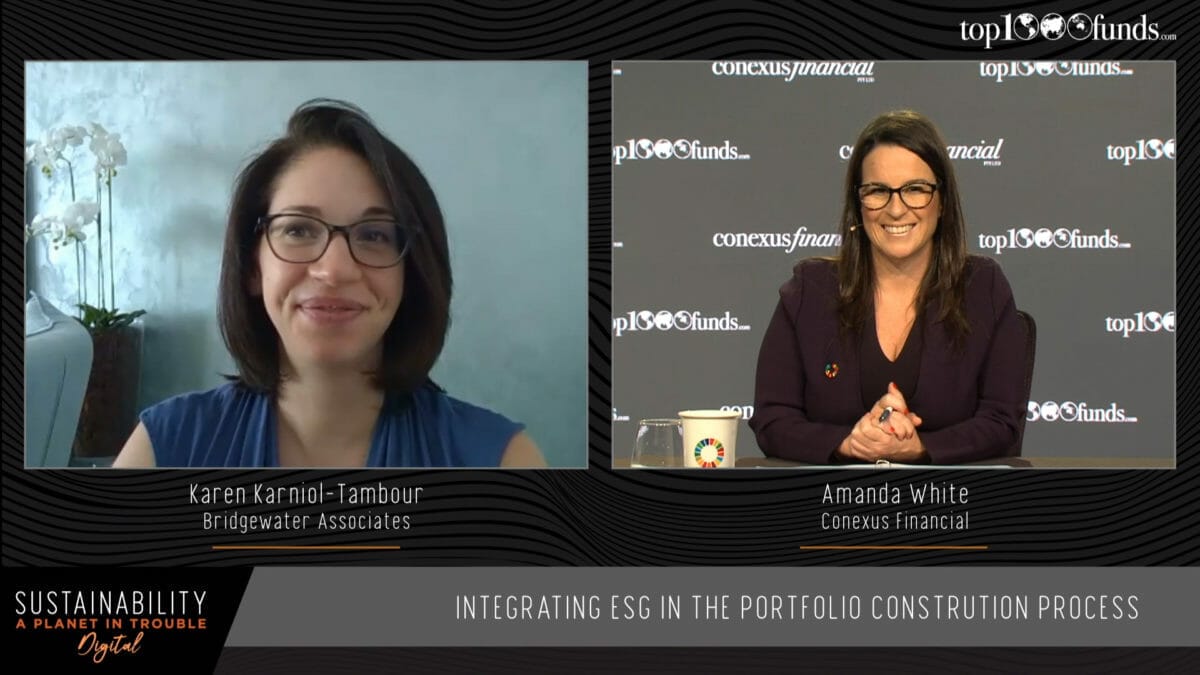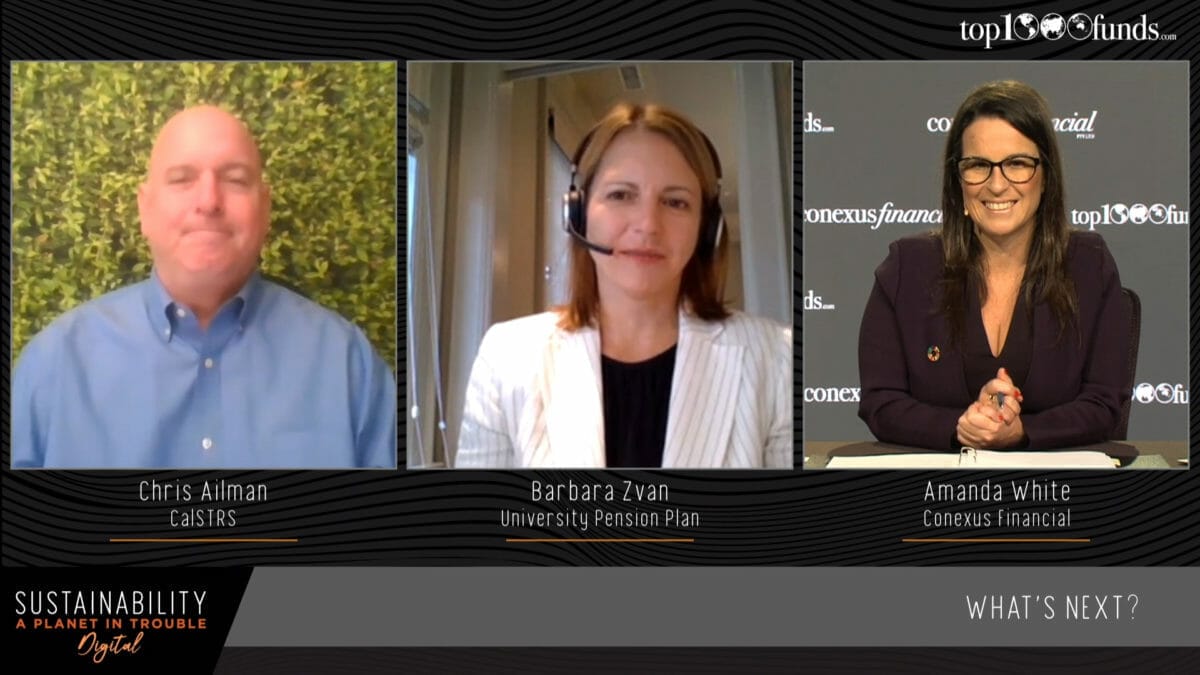Bridgewater’s three dimensional approach
Investors should shift from only looking at risk and return to adopting a three-dimensional model that incorporates impact, said Karen Karniol-Tambour, director of investment research at Bridgewater Associates where she heads up more than 150 investment professionals.
Speaking at Sustainability Digital, she urged delegates to put capital to work to finance solutions that can make a difference to the world. Noting that a few years ago such an idea seemed “aspirational,” she said today it is now “possible and achievable” for investors to think about risk, return and impact, accomplishing all three across all asset classes.
“It’s a huge change in perspective,” she said.
Investing for risk, return and impact involves systematically picking assets with specific goals in mind. She said the SDGs are broad but also hold specific targets and said investors should assess how each asset furthers the SDGs, choosing investments that have the most positive impact. She said the SDGs provided investors with a broad map of where to go and the ability to connect investment with goals.
“You will see those assets that have an impact are not that much different to other assets,” she said.
She noted that because investors can pick a wide range of assets, they don’t have to sacrifice return and can achieve a balanced portfolio. She said investors of “any size” could shift their mentality to achieve all three of these things.
Karniol-Tambour said integrating the SDGs could include making a commitment to net zero. You could make net zero the goal and set that goal, she said, reiterating that it would mean assessing every asset in the portfolio against that goal.
“There are a sufficient number of very scalable assets that would allow you to build a great portfolio with that goal in mind,” she said.
Karniol-Tambour said the availability and quality of data will get better, allowing investors to move in this area. Regarding Bridgwater’s research processes, she said the firm didn’t want to go off “reputation” and “policies” but did a deep dive into companies activities. This has involved sifting through multiple research organizations – a process that involved looking through 35 research organizations, and picking three.
She said that the current data available made it difficult to identify black swans in ESG. For example, research into the risk of a pandemic never flagged the reality of what COVID-19 has unleashed.
“There are a very wide range of outcomes,” she said. “The most important thing is to stress- test, think about extreme events and think about how much protection you need to buy.”
However, she noted the challenge of being “over concentrated” on an outcome that never materialises.
Inflation linked bonds
She noted that one-way investors can navigate government policy and incorporate sustainability is via investing in inflation-linked bonds. Large allocations to equities to escape the impact of low-yielding nominal bonds has left many investors “naked” to a large range of outcomes. Inflation-linked bonds issued by multilateral organisations that have sustainability enshrined in their mandates offer one solution.
“You know where the capital is going and it is inflation linked,” she said, flagging concerns of rising inflation in coming years. “This is well suited to balance stocks in your portfolio and is more useful than a traditional nominal bond.”
She explained to delegates that ESG factors will be critical in generating alpha in the years ahead and noted that some of the SDGs offered opportunities because they attracted much less capital.
She explained that it is impossible for investors to look at the world today without thinking about ESG and said that investors are operating in a difficult climate characterised by the downturn, the backdrop of zero interest rates and money printing as well as the impact of government policy.
She added that the huge expansion in the wake of the GFC was successful in terms of easing unemployment, but social conditions deteriorated.
“Today the pandemic has caused macro factors to deteriorate as well as social conditions,” she said.
She also flagged the divergence in different regions of the world to navigate climate change. For example, Singapore and Canada will fare better than regions in Asia and Latin America where climate change will impact long-term growth.
For all the conference sessions, stories and white papers visit the Sustainability content hub here.




